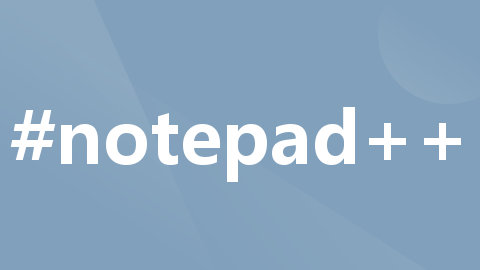
uniapp+微信小程序获取openId,获取access_token,订阅消息模板,java后台发送消息
1.前期准备2.用户订阅消息3.获取openId(uniapp)4.获取access_token5.发送消息6.请求的代码Springboot(自己写有发送请求方法的可以不用看)
目录
1.前期准备
2.用户订阅消息
3.获取openId(uniapp)
4.获取access_token
5.发送消息
6.请求的代码Springboot(自己写有发送请求方法的可以不用看)
1.前期准备
在微信公众号申请订阅消息
在公共模板这里选用模板,模板种类跟小程序设置的类目有关,只有特殊的类目有长期订阅模板
类目可以在设置中修改
2.用户订阅消息
选用模板后点击详情查看模板的id
在小程序上编写以下代码(这个是uniapp框架的代码)
uni.requestSubscribeMessage({
tmplIds:['1QO7f6SdIiw7loXtIhaIL5IKl4Ze0lS2moDVnjaAlLQ'],
complete:(res)=>{
console.log(res)
}
})微信原生大概是这样的,没试过哈
wx.requestSubscribeMessage({
tmplIds:['1QO7f6SdIiw7loXtIhaIL5IKl4Ze0lS2moDVnjaAlLQ'],
complete:(res)=>{
console.log(res)
}
})参考链接
其中tmplIds就是我们选用模板的id,是个数组,最多三个。
用户选择确定后便可以进行消息发送。
3.获取openId(uniapp)
获取code
uni.login({
provider:"weixin",
success:(loginRes)=>{
console.log(loginRes.code);
}
})后台通过code获取用户的openId
public String getOpenId(HttpServletRequest request, String code){
SendParam sendParam = new SendParam();
sendParam.setUrl("https://api.weixin.qq/sns/jscode2session");
Map<String,String> param = new HashMap();
param.put("appid","微信小程序的appid");
param.put("secret","微信小程序的secret");
param.put("js_code","用户通过登录方法获取的code");
param.put("grant_type","authorization_code");
sendParam.setGetParam(param);
SendReturn sendReturn = SendUtils.sendGet(sendParam);
System.out.println(sendReturn.getReturnString());
return ReturnData.reJson(ReturnCode.MC001);
}用get请求访问
https://api.weixin.qq/sns/jscode2session
例如
https://api.weixin.qq/sns/jscode2session?appid=xxx&secret=xxx&js_code=xxx&grant_type=authorization_code
访问成功就能获取到用户的openId
4.获取access_token
public String getAccessToken(){
SendParam sendParam = new SendParam();
sendParam.setUrl("https://api.weixin.qq/cgi-bin/token");
Map<String,String> param = new HashMap();
param.put("grant_type","client_credential");
param.put("appid","小程序的appid");
param.put("secret","小程序的secret");
sendParam.setGetParam(param);
SendReturn sendReturn = SendUtils.sendGet(sendParam);
return ReturnData.reJson(ReturnCode.MC001);
}用get请求访问
https://api.weixin.qq/cgi-bin/token
例如
https://api.weixin.qq/cgi-bin/token?grant_type=client_credential&appid=xxx&secret=xxx
访问成功即可获取到access_token
access_token是有时效的,默认7200秒。使用的时候记得看是否过期。
5.发送消息
public String send(){
SendParam sendParam = new SendParam();
sendParam.setUrl("https://api.weixin.qq/cgi-bin/message/subscribe/send?access_token=57_CRjtQyjioD2Qe46gxDicfRifwTN-9kfteW9Onc1ZlWizniNXH1ww1j7FUhWc1WXM9ja7GXRPm_mtTIEdGdt5a7lCH9118Axz2Rm0Ku2h57dhMSYiAtwP6QxBr1h62x55bN4bsb7ajFlZ5m73XCSaAAALQG");
Map param = new HashMap();
param.put("touser","otnoE5Ry_89dahJ2_OhxIXVcLBPg");
param.put("template_id","1QO7f6SdIiw7loXtIhaIL5IKl4Ze0lS2moDVnjaAlLQ");
Map dataMap = new HashMap();
dataMap.put("thing1",new HashMap<String,String>(){{put("value","2");}});
dataMap.put("thing2",new HashMap<String,String>(){{put("value","2");}});
dataMap.put("thing3",new HashMap<String,String>(){{put("value","2021-01-01 00:00:00");}});
param.put("data", dataMap);
sendParam.setPostParam(param);
SendReturn sendReturn = SendUtils.SendPost(sendParam);
return ReturnData.reJson(ReturnCode.MC001);
}发送post请求!!!post请求!!!
https://api.weixin.qq/cgi-bin/message/subscribe/send?access_token=xxxxx
其中access_token就是第四步获取到的access_token,参数要写到url中
之后就是要发送的数据
touser:要发送给用户的openId,获取方法看第三步
template_id:模板id,第一步选择模板时可以看到模板的id
data:要发送的数据,根据模板要求的数据来装配
比如模板要求的数据是这样的
那么最后拼凑的数据是这样的
data:{
thing1:{value:"123"},
thing2:{value:"123"},
thing3:{value:"123"},
}整体数据格式
{
"touser":"XXXX",
"template_id":"xxxxx",
"data":{
"thing1":{"value":"123"},
"thing2":{"value":"234"},
"thing3":{"value":"456"}
}
}用postMan看的话是这样的
请求成功后即可。
要注意的是,如果用的是一次性模板,用户订阅一次,服务端才能发送一次,若需要发送两次就需要用户订阅两次(也就是说要订阅两次)!!!!!????
长期模板的话,用户点击订阅后就不需要重复订阅,服务端也能一直发送消息。
6.请求的代码Springboot(自己写有发送请求方法的可以不用看)
代码垃圾,轻点喷 勿喷
SendParam
package ??????;
import org.springframework.http.HttpMethod;
import java.util.Map;
public class SendParam<T> {
private String url;
private Object postParam;
private Map<String,String> getParam;
private HttpMethod sendType;
private Class<T> classTr;
public SendParam() {
this.sendType = HttpMethod.GET;
}
public String getUrl() {
return url;
}
public void setUrl(String url) {
this.url = url;
}
public Object getPostParam() {
return postParam;
}
public void setPostParam(Object postParam) {
this.postParam = postParam;
}
public Map<String, String> getGetParam() {
return getParam;
}
public void setGetParam(Map<String, String> getParam) {
this.getParam = getParam;
}
public HttpMethod getSendType() {
return sendType;
}
public void setSendType(HttpMethod sendType) {
this.sendType = sendType;
}
public Class<T> getClassTr() {
return classTr;
}
public void setClassTr(Class<T> classTr) {
this.classTr = classTr;
}
}
SendReturn
package ???????;
import org.springframework.http.HttpStatus;
public class SendReturn<T> {
private boolean isSuccess;
private String returnString;
private T obj;
private HttpStatus statusCode;
private int statusCodeValue;
public SendReturn() {
this.isSuccess=true;
}
public boolean isSuccess() {
return isSuccess;
}
public void setSuccess(boolean success) {
isSuccess = success;
}
public String getReturnString() {
return returnString;
}
public void setReturnString(String returnString) {
this.returnString = returnString;
}
public T getObj() {
return obj;
}
public void setObj(T obj) {
this.obj = obj;
}
public HttpStatus getStatusCode() {
return statusCode;
}
public void setStatusCode(HttpStatus statusCode) {
this.statusCode = statusCode;
}
public int getStatusCodeValue() {
return statusCodeValue;
}
public void setStatusCodeValue(int statusCodeValue) {
this.statusCodeValue = statusCodeValue;
}
}
SendUtils
package ??????;
import com.google.gson.Gson;
import org.springframework.beans.factory.annotation.Autowired;
import org.springframework.context.ApplicationContext;
import org.springframework.http.*;
import org.springframework.stereotype.Component;
import org.springframework.web.client.RestTemplate;
import javax.annotation.PostConstruct;
import java.util.Map;
@Component
public class SendUtils {
private static RestTemplate restTemplate;
@Autowired
ApplicationContext applicationContext;
@PostConstruct
public void init() {
SendUtils.restTemplate = applicationContext.getBean(RestTemplate.class);
}
private static Gson gson = new Gson();
/**
* 发送get请求
* @param send
* @return
*/
public static SendReturn sendGet(SendParam send){
String url = send.getUrl()+"?";
if(send.getGetParam()!=null){
Map<String,String> map = send.getGetParam();
for(Map.Entry<String,String> entity : map.entrySet()){
url += entity.getKey()+"="+entity.getValue()+"&";
}
url = url.substring(0,url.length()-1);
}
SendReturn sendReturn = new SendReturn();
try{
ResponseEntity<String> responseEntity = restTemplate.getForEntity(url, String.class);
if(send.getClassTr()!=null){
Object o = gson.fromJson(responseEntity.getBody(),send.getClassTr());
sendReturn.setObj(o);
}
sendReturn.setStatusCode(responseEntity.getStatusCode());
sendReturn.setStatusCodeValue(responseEntity.getStatusCodeValue());
sendReturn.setReturnString(responseEntity.getBody());
}catch (Exception e){
System.out.println(e);
sendReturn.setSuccess(false);
}
return sendReturn;
}
/**
* 发送post请求
* @param send
* @return
*/
public static SendReturn SendPost(SendParam send){
SendReturn sendReturn = new SendReturn();
try{
ResponseEntity<String> responseEntity = restTemplate.postForEntity(send.getUrl(),send.getPostParam(),String.class);
if(send.getClassTr()!=null){
Object o = gson.fromJson(responseEntity.getBody(),send.getClassTr());
sendReturn.setObj(o);
}
sendReturn.setStatusCode(responseEntity.getStatusCode());
sendReturn.setStatusCodeValue(responseEntity.getStatusCodeValue());
sendReturn.setReturnString(responseEntity.getBody());
}catch (Exception e){
System.out.println(e);
sendReturn.setSuccess(false);
}
return sendReturn;
}
}
修改请求配置(这里用的是okhttp哈)
RestTemplateConfig
package ????;
import org.springframework.context.annotation.Bean;
import org.springframework.context.annotation.Configuration;
import org.springframework.http.client.OkHttp3ClientHttpRequestFactory;
import org.springframework.web.client.RestTemplate;
/**
* 数据请求配置
*/
@Configuration
public class RestTemplateConfig {
@Bean
public RestTemplate restTemplate() {
return new RestTemplate(new OkHttp3ClientHttpRequestFactory());
}
}
maven上要加上okhttp3和gson的依赖哈
pom.xml
<dependency>
<groupId>com.squareup.okhttp3</groupId>
<artifactId>okhttp</artifactId>
</dependency>
<dependency>
<groupId>com.google.code.gson</groupId>
<artifactId>gson</artifactId>
<version>2.8.5</version>
</dependency>更多推荐
 已为社区贡献2条内容
已为社区贡献2条内容









所有评论(0)